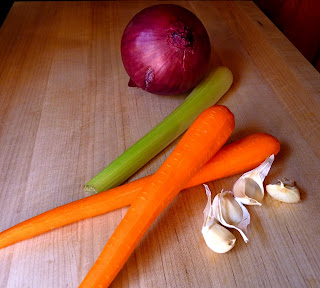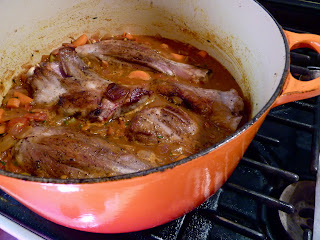The much touted Sergio Peneulas is no longer at the Mar Vista location. You've got to go to Inglewood to experience his cooking. There is a lot of discussion and hand-wringing about this over at Chowhound. Street Gourmet LA does a super job summing up the saga.
I didn't have enough time for Inglewood, last week, yet I was craving ceviche and shrimp. I figured that I would probably not have a 10 experience, but I was willing to settle for an 8. I'll definitely be heading out to Inglewood some time soon to see for myself what all the brouhaha has been about.
I was perfectly delighted by my lunch with Mo in Mar Vista on a very rainy Wednesday, last week. The food was excellent. I'll confess that I feel like I should be filled with self doubt when I say that. Foodies all over Los Angeles will be thinking that I don't know my ass from my elbow. How could it possibly be excellent if Peneulas wasn't manning the kitchen?
So please, take all of this with a grain of salt. When I finally make it to Inglewood, I'll be able to tell you the real story.

For now, please know that the green salsa is addictive -- very citrusy with a heat that sneaks up and makes you feel like your lips are glowing.

The camarones aguachiles also deliver a satisfying slow burn. The raw shrimp are luscious, bathed in lime and jalapeno. My face was damp with perspiration. We didn't bother with the heads here. But Mo and I gobbled up the bodies with gusto.

We also decadently ordered the ceviche mixto, without thinking twice about all the raw seafood we'd be eating. At a point, with only two people eating, I think there can be too much raw seafood. The mountain of ceviche should probably have been shared with a couple of friends.

It is a well executed ceviche. There is no doubt about that. The shrimp and octopus is very fresh and still tastes a lot of the ocean. I think there was supposed to be crab in there, but I didn't notice it.

Our final dish was the camarones a la diabla -- not that devilish in the end. This may have been the mildest dish. But it was nice to have a bit of contrast with the rest of the meal. This dish was warm and rich -- very comforting on a rainy day. I especially enjoyed all the oily onions tossed about. The crunchy heads were good here, but we couldn't finish them all. Mo and I both hoped that we got at least a little credit for the ones we did eat!

I have a feeling that a larger group is the way to go at Mariscos Chente. There are a lot of dishes to try, but one can only eat so many shrimp in one sitting. I was starting to feel a bit freaked out when I realized just how many shrimp I had consumed. District 9 images began floating through my head.
When I eat a meal, I really need textural variety to keep me going. I think in this case, while the food was terrific, our ordering could have been better. I very much would like to try the chicharron de pescado, pescado zarandeado and some of the seafood soups.
If you live in the area or can't make it to Inglewood, I certainly would not turn my nose up at the Mar Vista Mariscos Chente. Not even close. It is very good.
Very soon, I'll be bringing you the other side of the story.
Mariscos Chente
4532 South Centinela Avenue
Los Angeles, CA 90066









































